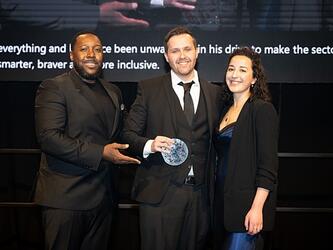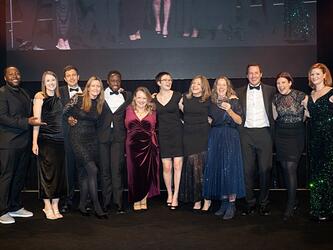A picture paints a thousand words
By Jane Bainbridge
There are ways and means of doing things in market research that become engrained and second nature. While there is always a need for established methodologies, familiar systems, recognised practices and continuity, new thinking and approaches are also required, whether to address changing technology or to probe people’s behaviour and motivations in a different way.
It was a desire to get such an outside perspective that led Hall & Partners’ in-the-moment mobile agency Tempo and photojournalist Simon Walker to work together.
There was a degree of serendipity about the two coming together. Richard Owen, founder and CEO of CrowdLab, and strategic adviser at Tempo, explains: “As part of Tempo’s offer we thought ‘what is the biggest cultural phenomenon of our time?’ It’s photography and sharing photos – and how can we harness the power of photography in research?”
This is where Walker came in, because “if we’re going to develop this idea, why don’t we talk to someone who’s spent their entire career taking and understanding photographs”, adds Owen.
Walker’s background was old-school photojournalism – covering world news for The Times for 15 years and then as its pictures editor – but he had tracked the changes in technology and adapted accordingly, setting up his own social media photographic business selling on everyday images that people were capturing on their smartphones.
“Far from being fearful of change, my career had developed and moved on with those changes in technology and the social adoption of technology. So when they [Tempo] said they had this app and wanted to use photography as a research tool – but with an intrinsic understanding of photography as a communication tool – it was an interesting adjunct to everything else I’d been doing,” says Walker.
The result was Walker working with Tempo to develop its methodology and an analytical framework to assess the image content.
“With two billion photos uploaded on the internet every day, the idea that businesses aren’t looking at those to better understand their clients, the services they’re offering and the world at large, would be ridiculous,” says Walker.
“There’s a paradigm shift and we record and validate our whole lives through photography. Using very specific tools for research to understand that was a creative and intellectual challenge I was keen to be involved in.”
He describes the outside skill set that he brought to market research as ‘photo semiotics’. “The processes we use to communicate photographically – some learned, some cultural and some instinctive – mean communication has just been made easier. What is the research seeking to achieve? It’s there to find out what customers feel or want or need, and most people struggle to tell you and write that down.
“The joy of simplifying that process to an in-the-moment photographic element is that it opens up an emotive response, rather than a rational one. As a picture editor, I expect the world to give me irrational, emotional responses. That’s where I find my stories – understanding the essence and the underlying feelings and messages.”
Finding the stories is where this non-traditional market research view becomes so useful in picture analysis. Owen explains: “What we’re finding is insight that we wouldn’t have known to ask about.”
He cites a project the agency did on software development, which was about understanding the adoption of the client’s versus rivals’ software. It involved participants documenting their lives as software managers and, when Tempo looked at the photos, what stood out was the use of Post-it notes. “That was a photographic reveal of something we’d never thought to ask,” says Owen.
Tempo is also using this technique to adapt and enhance traditional research methods. “For a depth or focus group interview, we’ll get people to document their lives around the group in question for a week before the meeting. Then our traditional qualitative moderators – instead of opening with ‘let’s talk about your last shop in Waitrose’ – can say ‘you took a photo at 4pm last Thursday in Waitrose; this happened and you said you felt like this’. Rather than relying on memory, you’re taking people back.”
But with photographs now so ubiquitous, and people carefully filtering what they share as they adopt a social media persona, how can they be sure the pictures being sent for research purposes are accurate and honest?
Walker says: “What’s important as a research tool is to separate the white noise from the specific stuff we’re asking for. Which is why, when a client wants xyz, we haven’t tried to syphon bits out; we’d be making too many subjective judgements. We’ve taken the behaviour pattern that everyone’s so comfortable with and said let’s focus that behaviour on a specific task. Respondents filter out the white noise for us.”
Owen adds that you naturally lose some of the persona because these photographs are for a specific project.
“A lot of the work is keeping a two-week mobile record of a certain topic; it’s a very individual ethnographic experience, so they present what’s really happening. In any project, it feels like a rule of thirds – a third over-share (all the good stuff, but also all the other stuff too); a third are really focused on the task; and a third you have to chivvy along a bit with push notifications.”
Walker says that while working with Tempo has reinforced his feeling that people are really keen to share, “it has also surprised and delighted me that businesses are prepared not just to stand outside and look in, but to be involved and engaged with it”.

We hope you enjoyed this article.
Research Live is published by MRS.
The Market Research Society (MRS) exists to promote and protect the research sector, showcasing how research delivers impact for businesses and government.
Members of MRS enjoy many benefits including tailoured policy guidance, discounts on training and conferences, and access to member-only content.
For example, there's an archive of winning case studies from over a decade of MRS Awards.
Find out more about the benefits of joining MRS here.














0 Comments